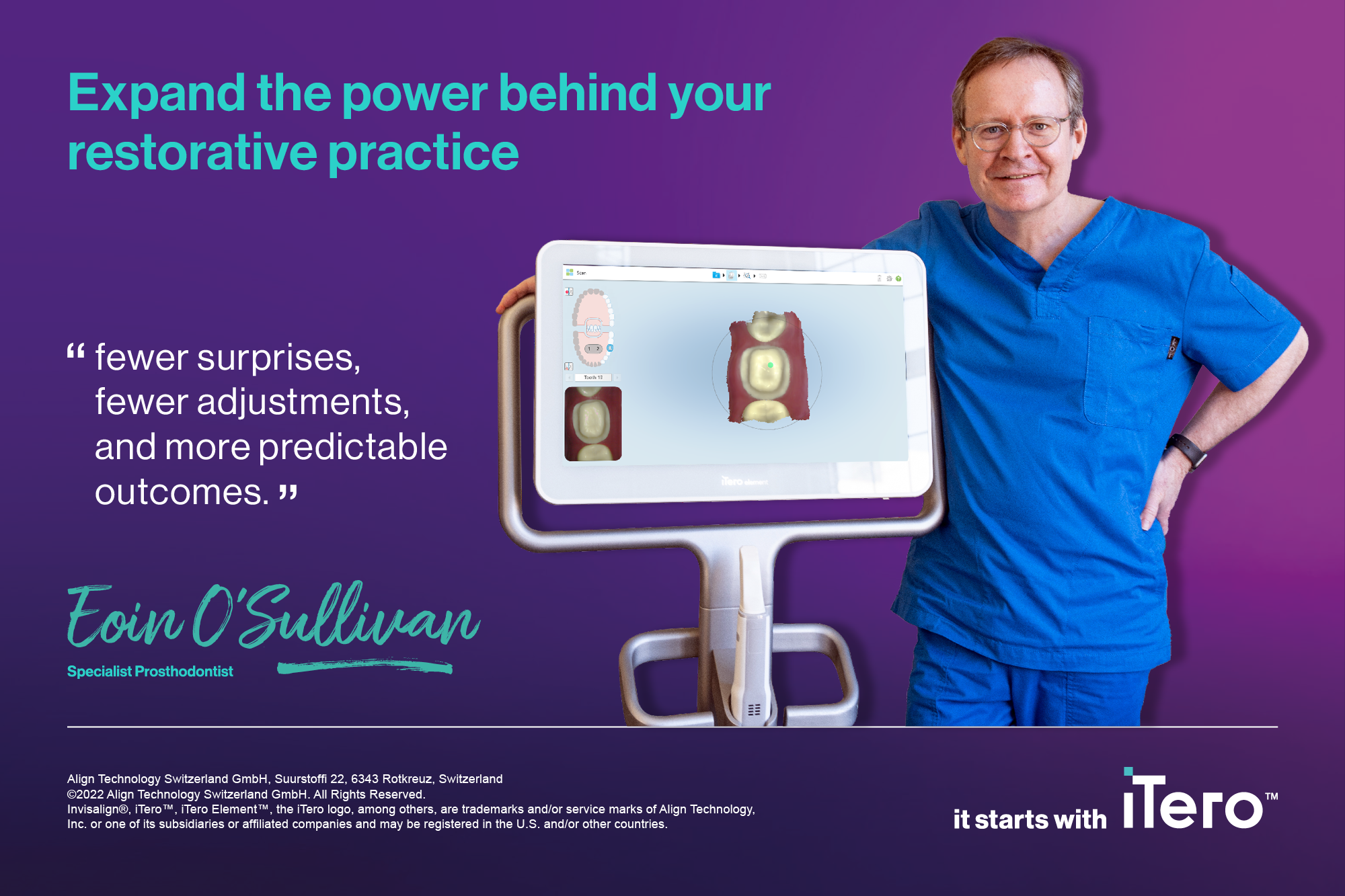Eoin O’Sullivan, a specialist in prosthodontics, explains why using an intraoral scanner is essential for improved outcomes.
Hello, my name is Eoin O’Sullivan. I’m a specialist in prosthodontics, and I’ve been working at the No8 Partnership in Chelsea, central London for the past 22 years.
I have been using digital workflows for the last 12 years, and I have been an early adopter of digital dentistry. My journey with iTero scanners began 12 years ago when I got my first intraoral scanner.
It was an iTero scanner because they were the original ones in the market. Since then, I have been using iTero scanners exclusively.
I initially started using iTero scanners because I was impressed with their accuracy and the improved outcomes compared to traditional impressions. Even though digital workflows were not as advanced back then, the restorations made from digital impressions were already a significant improvement in fit and predictability.
Over the years, digital workflows have developed, and our technician colleagues have made great progress, creating new digital methods and using new materials for making restorations. This development has aligned well with the advancements in clinical digital techniques, providing us with a wide array of techniques and methods for restoring our patients’ teeth.
More than impression taking
People often wonder what an intraoral scanner can be used for besides taking impressions. In my experience, an intraoral scanner is much more than just an impression-taking device.
It serves as a communication tool, a planning tool, a treatment tool, and a means of monitoring progress. I use it in various ways throughout my practice, making it one of the most essential tools I have.
As a communication tool, sharing intraoral scans with my patients has been incredibly powerful. Patients engage with their own mouths in a way I have never seen before when they manipulate the scan and explore their teeth in 3D.
It sparks their curiosity and leads to many questions, which enhances communication and understanding. Additionally, the scanner serves as a diagnostic tool, allowing us to visualise the patient’s teeth, detect caries, identify cracks and evaluate enamel imperfections using near-infrared technology.
For planning purposes, I can easily share the scans with the laboratory, enabling us to collaborate on digital wax-ups and treatment plans virtually. This virtual interaction is particularly valuable for post-COVID patients who prefer minimising in-person visits.
With the records stored securely on the cloud, I have access to patient scans at any time, which is beneficial for tracking progress and providing comprehensive care, especially in cases of trauma or restorative work.

Continuous collaboration
Taking digital scans during treatment, such as crown preparations, offers significant advantages over traditional workflows. I can immediately assess the virtual model, ensuring clear margins, occlusal clearance, and overall accuracy while the patient is still present.
If any issues arise, I can make on-the-spot corrections, saving time and eliminating the need for patients to return for a redo. This level of control and precision contributes to improved predictability, fewer remakes, and minimal occlusal adjustments.
Using the iTero scanner has also revolutionised communication with the laboratory. Digital workflows allow for instant transmission of scans, eliminating the need for physical delivery. Through platforms like Exocad, I can share the scans with the lab, discuss the case, and provide my input at every step. This continuous collaboration ensures that there are no misunderstandings, leading to better outcomes and reduced adjustments when fitting restorations.
In terms of clinical outcomes, the accuracy of iTero scans and the digital workflow greatly reduce the potential for errors. This translates to near-perfect fits, precise occlusion and enhanced predictability.
With the ability to check each step of the process and interact with the lab, I have more control over the final results and can optimise treatment outcomes for my patients. Additionally, digital workflows allow for easy replication of previous restorations.
Eoin led a webinar on the the benefits of using digital techniques in restorative dentistry.
This can be found in the On Demand section of Dentistry Webinars.
For more information visit www.itero.com/en-gb.


